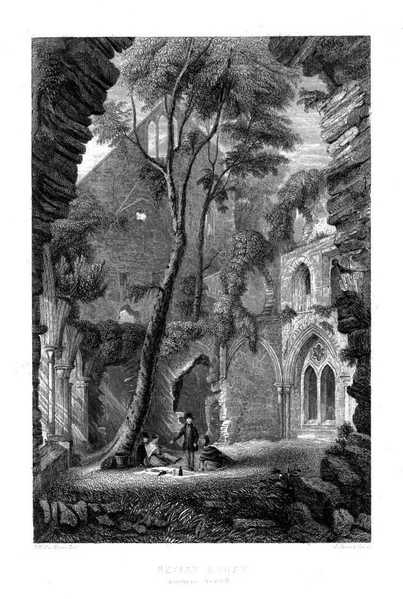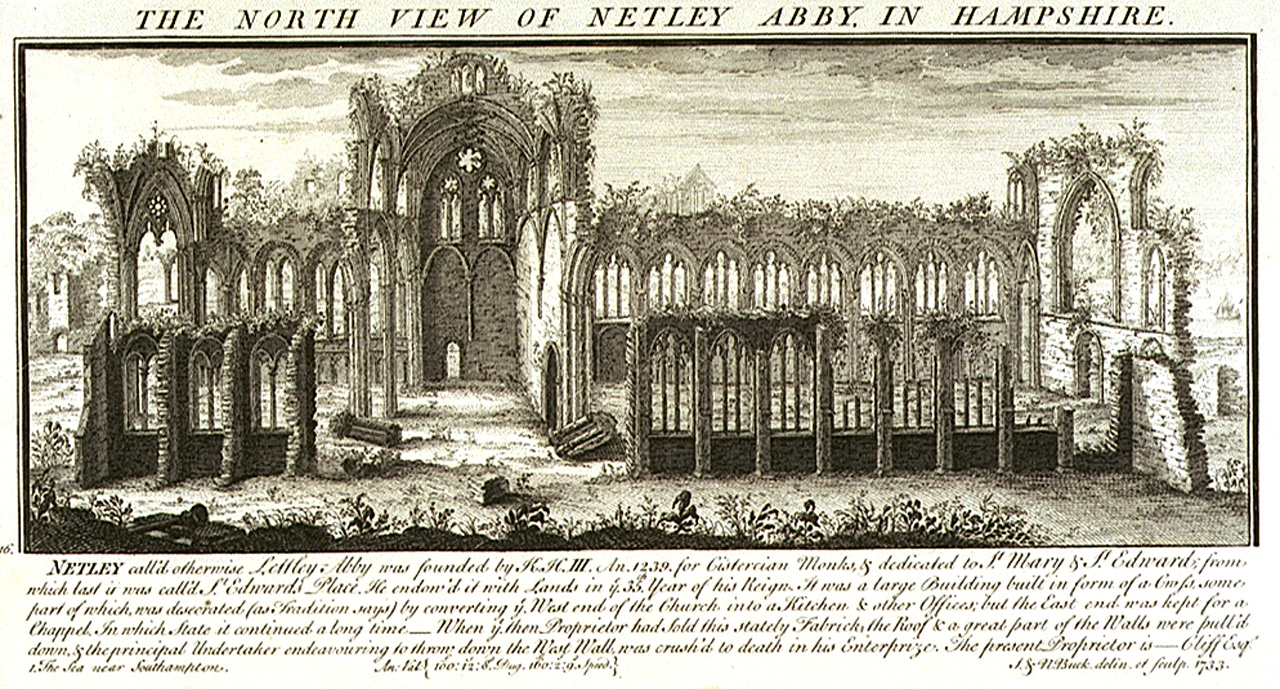Writing to his dear friend (and probable mistress) Martha Blount, Pope related
his adventure at Netley Abbey and his alfresco luncheon there. He does not call it a picnic because the word was not used in English parlance until 1806. (See Harris’s The happy courtship, Merry Marriage, and Pic-Nic Dinner of Cock Robin and Jenny Wren)
Pope was squeamish about dining outdoors. He was anxious about encountering snakes and toads if they settled on the grass. But his host Charles Mordaunt did not want to dine inside the ruins, and Pope thoughtfully acquiesced. He informs Blount that “We soon chose our Dinning room & found Seats of the Capitals of two Pillars that were fallen dropt down, & our Table of the length of another fallen Pillar. We had large entire arches over our heads. . .” 
Matter of factly, Pope writes lunch mainly was liquid, “well victualld” according to Mordaunt, with claret. gallons of brandy, and Frontigniac [Muscat] accompanied with Cold Pye, Pigoons & turkies.” For a salad, they foraged and picked Alisander (wild parsley) for a salad eating with oil and vinegar. (Presumably, they knew good Alisander from bad, for some varieties are poisonous.)
*Netley Abbey has long been a sightseeing destination. Nathaniel and Samuel Buck’s view of the ruins shows it just as Pope and Mordaunt would have seen it during their visit on August 11, 1734. It’s also the ruins that Jane Austen alludes to in Northanger Abbey (1817), her satire of Gothic novels. Austen planned a trip to the Abbey in 1808 and, weather permitting, picnic, but it’s unknown if it came off.
See G.S. Rousseau. “A New Pope Letter.” Philological Quarterly 45, no. 2 (1966): 409-418; Alexander Pope, Alexander. Alexander Pope: Selected Letters, Edited by Howard Erskine-Hill (New York: Oxford University Press, 2000); Deborah Kennedy. “The Ruined Abbey in the Eighteenth Century, “Philological Quarterly 80 (2001).

